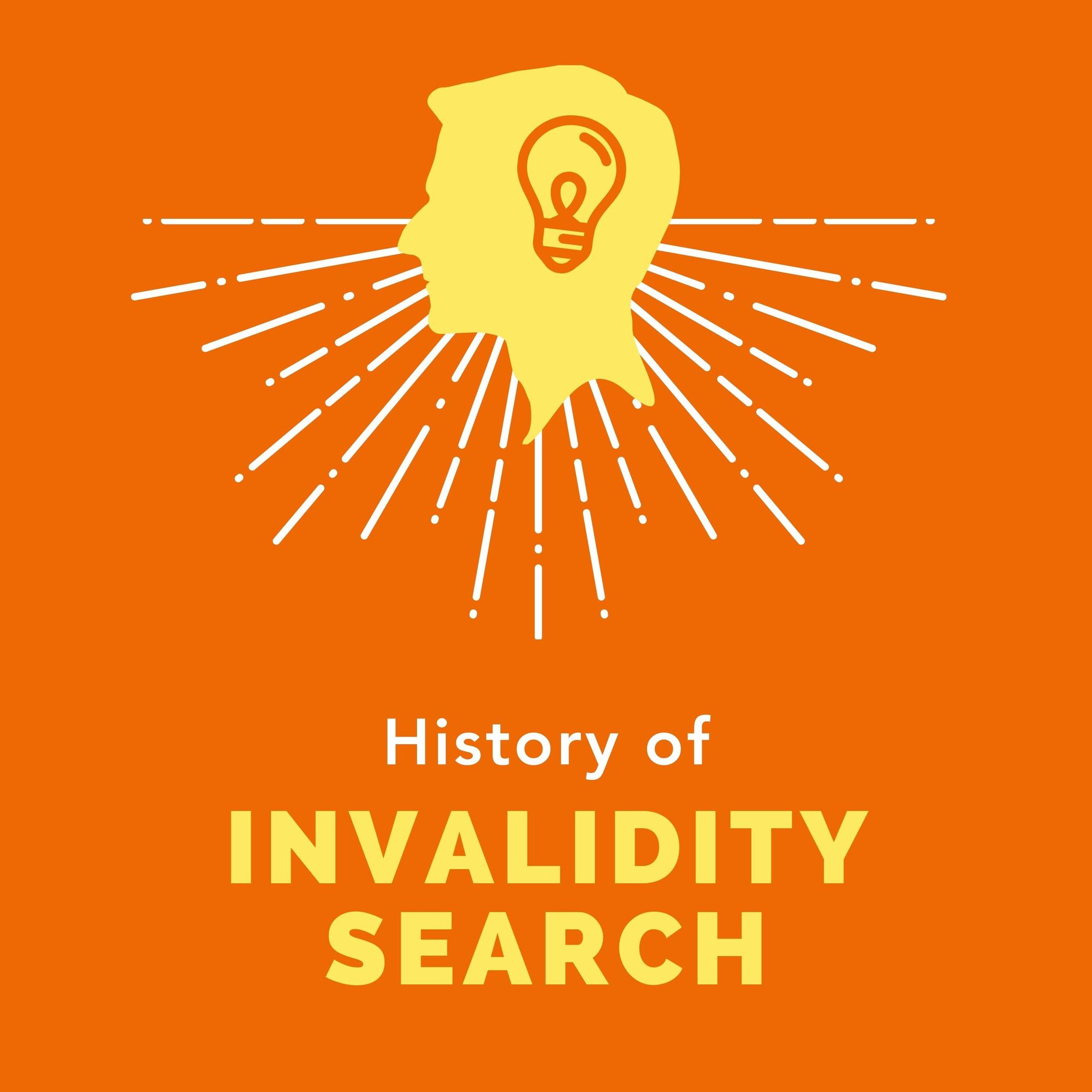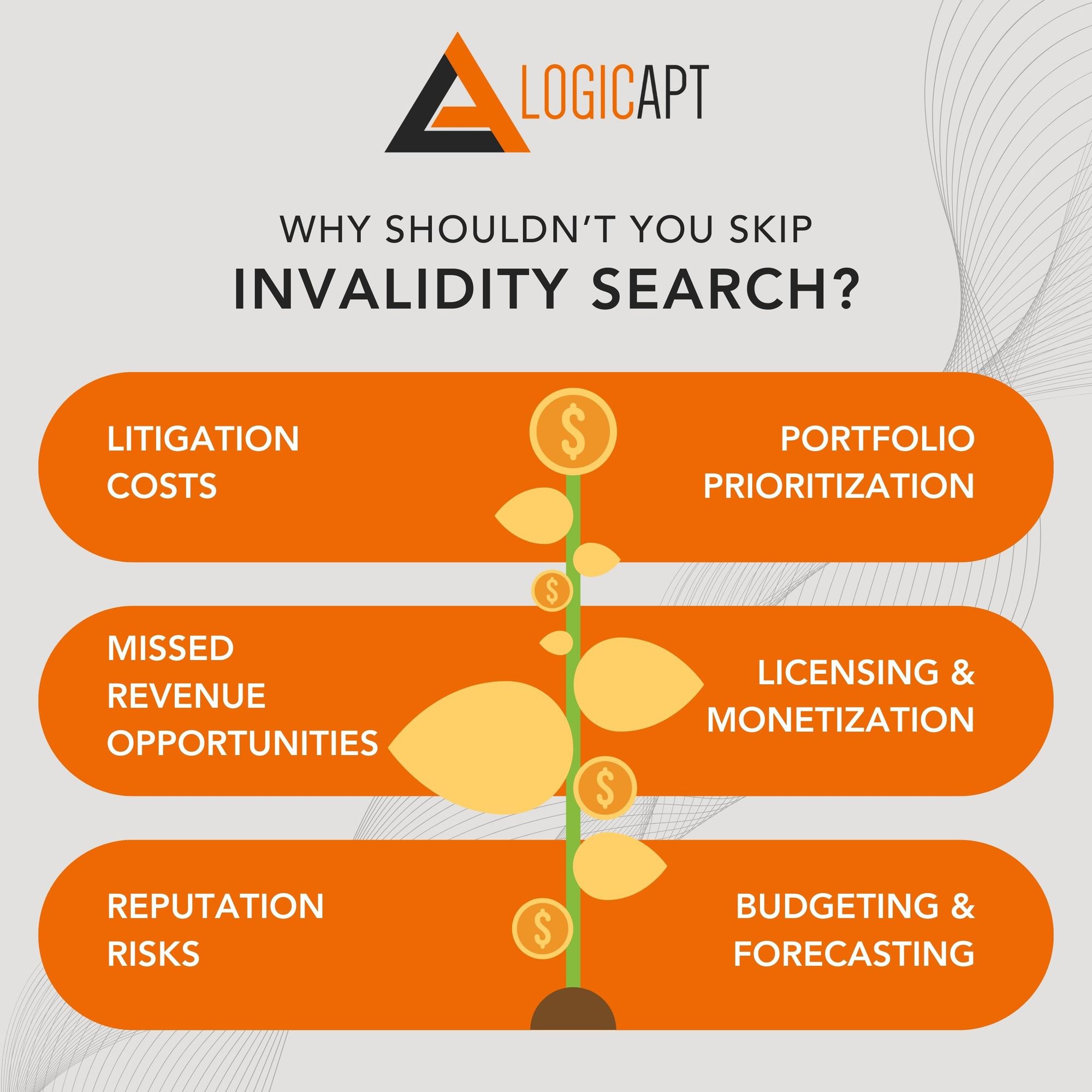The Importance of Invalidity Search in Patent Law

In the intricate tapestry of the modern business world, few threads shimmer with as much intrigue and value as intellectual property (IP). This realm, characterized by patents, trademarks, and copyrights, is where innovation meets protection and ideas are transformed into valuable assets. The world of patents, in particular, stands as a testament to humankind's relentless pursuit of progress, offering inventors the promise of recognition and commercial advantage for their groundbreaking creations.
However, like any grand structure built over centuries, the patent ecosystem has complexities. Among its many pillars, one often stands out not for its visibility but its foundational importance: the invalidity search. While it might not make headlines as often as multi-million-dollar patent lawsuits or tales of revolutionary inventions, it plays a pivotal, often behind-the-scenes role in shaping the narrative of patent law.
As we delve deeper into this topic, you'll uncover the intricate dance of invalidity searches—how they safeguard innovations, influence legal battles, and often determine the true worth of a patent. Consider this your invitation to a backstage tour of the patent world, where we shine a spotlight on one of its unsung heroes.
What Is an Invalidity Search?
In the bustling marketplace of ideas that is the patent landscape, not all claims of originality are genuine, and not all patents hold water when scrutinized. Enter the invalidity search, a specialized tool in the arsenal of patent professionals.
An invalidity search, often considered a patent validity search, is a comprehensive exploration of existing patents, articles, publications, and other public records—collectively known as "prior art." The quest? Any evidence that might suggest a particular patent shouldn't have been granted due to a lack of novelty or because it was apparent at the time of application. It's a deep dive into the archives to ascertain if a patented idea is as groundbreaking as it claims.
Drawing a parallel from the previous discussion, you can think of an invalidity search as a detective's investigation. In this case, the detective is not solving a crime but unraveling whether a patented concept stands out in pre-existing knowledge.
Objectives and Goals:
The motives behind embarking on this investigative journey are multifaceted:
Litigation Support:
In the courtroom, when patents clash, an invalidity search can unearth the game-changing evidence that questions the legitimacy of an opposing patent.
Risk Mitigation:
This search is a safety net for companies eyeing a new patent acquisition or considering licensing, ensuring the patent won't crumble under potential challenges.
Strategic Insight:
Beyond defense and acquisition, invalidity searches also provide businesses with a clear lens to evaluate the strength of their patents or those of competitors.
In the grand scheme of patent management, the invalidity search is not just a precaution—it's a strategic imperative. It offers clarity in a world where the lines between original and derivative can often blur, ensuring that the true innovators get the recognition and protection they deserve.
Historical Context
In many ways, The story of patents reflects humanity's relentless drive for progress. As long as humans have been inventing, there's been a need to protect those inventions. The chronicles of patent law and the rise of invalidity searches are deeply intertwined tales of this protective endeavor.

Patent law's roots can be traced back to ancient Greece, where inventors in Sybaris were granted a year of exclusivity to profit from their unique culinary creations. Fast forward to Renaissance Italy, and we find the Venetian Patent Statute of 1474 – often hailed as the first "modern" patent system. This statute was an early acknowledgment of the balance between rewarding inventors and ensuring broader societal progress.
However, the Industrial Revolution put patent law on the global map. As inventions became central to economic progress, countries established formal patent systems. The U.S. Constitution, for example, granted Congress the power "to promote the progress of science and useful arts" through patents as early as 1787.
The Emergence of Invalidity Searches:
The concept of invalidity, or challenging the legitimacy of a patent, is as old as the patent system itself. But as patent libraries grew, so did the need for systematic ways to scrutinize them. Invalidity searches started as manual endeavors—detailed reviews of paper archives. They were the realm of specialized attorneys and relied heavily on human expertise and intuition.
However, the 20th century, with its technological advancements, transformed this landscape. The introduction of computer databases in the latter half of the century streamlined the search process, making it more efficient and less prone to human error.
The Evolution Over the Years:
From paper to pixels, the world of invalidity searches has undergone a seismic shift. The advent of digital databases, AI, and machine learning has turned what was once a manual, time-consuming process into a rapid, comprehensive exploration of vast knowledge repositories. Today's invalidity search tools are faster and more precise, capable of identifying nuances that might have been overlooked in a manual review.
Essentially, the journey of invalidity searches mirrors the broader trajectory of human progress. From the quill to the keyboard, from dusty archives to digital databases, they've evolved to meet the ever-increasing demands of the patent world.
The Crucial Role in Litigation
The courtrooms, where patent disputes unfold, are theaters of high stakes. They're not just about determining infringements but also about establishing the very validity of patents. Here, invalidity searches don't merely play a supporting role; they're often the leading actors driving the narrative of the trial.
Central to Patent Disputes:
Invalidity searches serve a dual purpose in litigation. Firstly, they provide a defense strategy for entities accused of infringing a patent. The defendant can counter the plaintiff's claims by unearthing prior art and questioning the patent's validity. Secondly, they offer plaintiffs a means to reinforce their patent's strength, ensuring they're on solid ground before instigating litigation.
Real-world Examples of Invalidity Search in Patent Law:
- Apple vs. Samsung (2011): One of the most high-profile patent battles of the 21st century, the Apple vs. Samsung case saw both tech giants clash over multiple patents. Throughout the lengthy litigation, invalidity searches played a key role. To invalidate some of Apple's patents, Samsung brought forth prior art that predated Apple's filings. While not all attempts were successful, the strategy showcased the weight invalidity searches hold in litigation.
- Microsoft vs. i4i (2007): In this landmark case, software giant Microsoft was taken to court by i4i over alleged infringement of a patent related to custom XML functionality. Microsoft's defense included attempting to invalidate i4i's patent using prior art. Though the search was exhaustive, the prior art presented did not sway the court, and Microsoft faced hefty fines. This case underscores the importance of conducting an invalidity search and ensuring it is thorough and irrefutable.
- Eolas Technologies vs. Adobe, Amazon, and Others (2009): Eolas, a small tech company, sued various giants like Adobe and Amazon, claiming they infringed on its web browser patents. The defendants united, investing in a robust invalidity search. They unearthed a demo predating Eolas's patent, effectively showcasing that the idea wasn't novel. The search's success saved the defendants from potential billion-dollar damages.
Each of these cases underscores the critical nature of invalidity searches in litigation. They can be the shield that protects from infringement claims or the sword that punctures holes in a seemingly impenetrable patent.
Applications Beyond Litigation
While the dramatic courtroom battles often spotlight invalidity searches, their influence extends far beyond these legal arenas. Like a Swiss Army knife in intellectual property, invalidity searches boast a range of applications, each instrumental in its own right.
Patent Applications and Renewals: Before one even begins defending a patent in court, there's a crucial step to obtaining the patent. Here, invalidity searches play a preventive role.
- When filing a new patent application, these searches help identify any existing prior art that might challenge the invention's novelty. With this knowledge, inventors can fine-tune their claims, increasing the likelihood of a patent grant.
- Conducting an invalidity search for patent renewals, especially in sectors with rapid technological advancements, ensures the patent still holds its ground against any new entrants in the knowledge pool.
M&A Due Diligence:
Due diligence is paramount in the high-stakes and acquisitions (M&A) world. Invalidity searches become vital tools in this process.
- Acquiring companies can use these searches to gauge the strength and validity of a target company's patent portfolio. It offers a lens to ascertain the potential risks or litigation costs that might arise post-acquisition.
- For the company being acquired or merged, showcasing robust invalidity search results can be a strategic move, potentially elevating its valuation during negotiations.
Strategic Patent Portfolio Management:
For businesses, patents aren't just trophies to be showcased; they're strategic assets. Invalidity searches are integral in patent portfolio management, aiding companies in making informed decisions.
- Companies can prioritize which patents to maintain, license, sell, or even abandon based on the strength and validity determined through these searches.
- When scouting for patents to acquire, invalidity searches offer a prism to assess the actual value and potential risks associated with the patents.
In essence, while the drama of litigation might cast the most visible shadow, invalidity searches operate in diverse arenas, ensuring that intellectual property's sanctity is upheld. From the inception of a patent idea to its strategic deployment in business maneuvers, these searches serve as the guiding light, illuminating potential pitfalls and opportunities.

The Economics of Invalidity Searches
In the chessboard of intellectual property, where strategy and foresight determine success, invalidity searches are often the unsung heroes—guarding businesses against potentially catastrophic blunders and helping them capitalize on lucrative opportunities. Let's decode the monetary significance behind these essential searches.
Monetary Implications of Skipping an Invalidity Search

Litigation Costs:
The old saying goes, "A stitch in time saves nine." The potential expenses of a full-blown patent lawsuit often dwarf the upfront cost of conducting an invalidity search. Legal fees, damages, and lost business opportunities can quickly escalate into millions, if not billions.
Missed Revenue Opportunities:
With a robust invalidity search, a company can capitalize on a patent, fearing potential infringements. This caution can result in lost revenue streams from licensing, selling, or even leveraging the patent in products or services.
Reputation Risks:
A legal tussle due to overlooked prior art can tarnish a company's reputation, affecting its relationships with investors, customers, and partners. Such reputational damage can have long-term economic ramifications.
Driving Strategic Financial Decisions
M&A Valuation:
For businesses involved in mergers and acquisitions, invalidity searches offer a clearer picture of a target company's patent portfolio's worth. Identifying potential legal landmines can affect the negotiation and valuation process.
Portfolio Prioritization:
Not all patents are created equal. By conducting thorough invalidity searches, companies can identify which patents in their portfolio are the crown jewels (worth investing in) and which might be potential liabilities.
Licensing and Monetization:
A strong patent, backed by a robust invalidity search, can be a significant revenue generator. Companies can confidently license their technology, enter into partnerships, or even sell patents, knowing they have a solid legal foundation.
Budgeting and Forecasting:
With insights from an invalidity search, businesses can allocate resources more effectively, budget for potential patent-related expenses, and forecast revenues from IP monetization.
Technological Innovations in Invalidity Searches
In the age of digitization, where technology has become the backbone of nearly every industry, the patent landscape has remained intact. The advent of cutting-edge tech has drastically transformed how invalidity searches are conducted, making them more efficient, accurate, and insightful.
The Role of Technology in Refining the Search Process
- Digital Databases: Gone are the days when patent searches meant poring over voluminous physical records. Comprehensive digital databases, from national patent offices to global aggregators like WIPO, offer instant access to millions of patent records.
- Advanced Search Algorithms: Modern databases have sophisticated algorithms that can sift through vast amounts of data, finding relevant patents based on keywords, classifications, inventors, and more. This fine-tuned search saves time and reduces the chance of oversight.
- Visualization Tools: To simplify complex data, visualization tools graphically represent patent landscapes, relationships, and timelines, offering a bird's-eye view and helping searchers identify patterns or gaps quickly.
The Future: AI, Machine Learning, and Beyond
- Artificial Intelligence (AI): AI tools can understand the context and revolutionize invalidity searches. They can predict which patents might be relevant based on patterns and relationships, offering a depth of analysis previously unthinkable.
- Machine Learning (ML): ML algorithms, a subset of AI, can be trained to refine their search methods continuously. As they're exposed to more data, they 'learn' and become more adept, ensuring the search process becomes progressively more efficient.
- Natural Language Processing (NLP): Especially useful when dealing with vast textual data in patents, NLP tools can understand, interpret, and even translate patent documents, making cross-border invalidity searches smoother.
- Predictive Analysis: Looking beyond identifying relevant prior art, future tools predict potential invalidity challenges a patent might face based on historical data and evolving legal precedents.
- Blockchain: Though still nascent, blockchain technology could ensure the authenticity and timestamp of prior art references, offering an immutable and transparent record.
The marriage of technology and invalidity searches is a testament to the age-old adage: "Adapt or perish." As the world becomes increasingly interconnected and digital, embracing these innovations is not just an option but a necessity for those in the patent realm. These tools, while sophisticated, are but enablers—helping professionals navigate the intricate maze of patents with precision, speed, and foresight.
Challenges in Invalidity Searches
While invalidity searches are essential in the patent world, conducting them is only sometimes a walk in the park. Various anticipated and unexpected challenges can crop up during the process. Let's identify these hurdles and explore the measures to overcome them.

Common Hurdles:
- Vast Databases: The sheer volume of current and historical patents can be overwhelming. With millions of patents filed globally annually, sifting through this ocean of data to find relevant prior art is no small task.
- Language Barriers: Patents are filed worldwide and are available in countless languages. Not only does this make searching more complex, but nuances in translation can also lead to overlooked or misunderstood information.
- Evolving Patent Laws: Patent laws are not static; they evolve based on jurisdictions, treaties, and changing economic landscapes. Keeping abreast of these changes can be daunting, especially globally.
Strategies to Overcome Challenges:
- Specialized Search Tools: Professionals leverage specialized patent search tools to handle large databases, allowing advanced filtering and ensuring only the most relevant patents are reviewed. These tools can narrow searches by dates, inventors, assignees, and more.
- Multilingual Expertise and Tools: Employing experts fluent in multiple languages or leveraging translation tools, especially those equipped with Natural Language Processing (NLP), can bridge the language gap. This ensures that patents, regardless of origin, are considered in the search process.
- Continuous Training & Updates: Given the dynamic nature of patent laws, regular training sessions and updates are essential for professionals engaged in invalidity searches. Staying informed about the latest legal developments ensures that searches are compliant and up-to-date.
- Collaborative Approach: Many hands make light work. Engaging a team of experts, each bringing a unique perspective and skill set, can ensure a more comprehensive and efficient search process.
- Feedback Loops: Incorporating feedback from past searches and continuously refining methodologies can lead to better outcomes in future searches. It's a cycle of learning and improving.
The challenges in invalidity searches, while significant, are manageable. With the right blend of expertise, technology, and strategy, these hurdles can be effectively navigated, ensuring the search process remains thorough, accurate, and insightful.
Myths & Misconceptions
Behind the curtain of patents and intellectual property, the domain of invalidity searches often remains shrouded in myths. Let's shine a light on these misconceptions, separating fact from fiction.
1. "If a patent is granted, it's indisputably valid."
Truth: While patent offices conduct examinations, they might only catch some prior art or inconsistencies. A granted patent doesn't guarantee its invulnerability to invalidity challenges.
2. "Invalidity searches are only useful in litigation."
Truth: Beyond courtroom battles, invalidity searches play pivotal roles in M&As, patent renewals, portfolio management, and more. They're multifaceted tools, not just litigation shields.
3. "Any prior art found instantly invalidates a patent."
Truth: Not all prior art is a 'silver bullet.' The prior art's relevance, context, and specificity of patent claims determine its impact.
4. "Technology alone can conduct a comprehensive invalidity search."
Truth: While AI and advanced tools have revolutionized the search process, human expertise remains irreplaceable. The nuances, interpretations, and strategic insights professionals offer can only partially be replicated by machines.
5. "Invalidity searches are too expensive and not worth the investment."
Truth: The upfront cost of an invalidity search pales in comparison to potential litigation costs, lost revenue opportunities, and reputational damages. They're not expenses but strategic investments.
6. "A successful invalidity search guarantees a win in court."
Truth: While a robust invalidity search can provide strong evidence, court outcomes depend on various factors, including legal arguments, jurisdictional nuances, and the broader context of the case.
7. "All invalidity searches are the same."
Truth: Invalidity searches can vary in depth, scope, and methodology. Tailored searches yield the best results based on specific needs and objectives.
Debunking these myths is not just an exercise in truth-telling but a step towards more informed decision-making. By setting the record straight, we pave the way for businesses, inventors, and professionals to harness the true power of invalidity searches, free from misconceptions.
Key Players in Invalidity Searches
Central to intellectual property, invalidity searches are more than just one-size-fits-all endeavors. Different entities with unique motivations and objectives delve into these searches. Here's a brief on some primary players:
Each player in this ecosystem brings a unique perspective to invalidity searches, shaping and being shaped by the outcomes. While their motivations might differ, their collective endeavor underscores the undeniable importance of these searches in the patent world.
The Global Perspective
The intricacies of patents aren't confined to a single geography. Understanding the international dimensions of invalidity searches is crucial in an interconnected world.
Challenges of Global Searches:
- Jurisdictional Differences: Every region has unique patent laws, practices, and procedures. Navigating these varying landscapes requires expertise and adaptability.
- Language Barriers: With patents filed in native languages, translation becomes vital, ensuring nuances aren't lost.
- Volume of Data: From a global perspective, the sheer volume of patents can be overwhelming.
Benefits of Global Searches:
- Comprehensive View: A global search offers a holistic view, ensuring no stone is left unturned, regardless of where a patent might be filed.
- Strategic Insights: By understanding patent landscapes across major markets, businesses can decide where to patent, license, or launch their innovations.
- Risk Mitigation: A thorough global search can preempt potential legal challenges in international markets, protecting businesses from unforeseen litigation.
The global fabric of invalidity searches is both intricate and intriguing. While it poses challenges, it also offers opportunities for those willing to embrace its complexities and nuances.
Best Practices and Recommendations
Invalidity searches, while essential, can be complex. However, with the right approach and resources, businesses and inventors can streamline the process and achieve optimal outcomes.
- Define Clear Objectives: Understand the primary goal of the search. Is it for litigation, patent application, M&A due diligence, or portfolio management? Tailor the search strategy accordingly.
- Use Comprehensive Databases: Don't limit the search to one database. Explore national patent databases, global repositories like WIPO, and specialized databases for a holistic view.
- Invest in Technology: Utilize advanced patent search tools with AI and ML capabilities. These can expedite the search process and offer deeper insights.
- Seek Expertise: Consulting with patent attorneys or specialized search firms can be invaluable, especially for those unfamiliar with the intricacies of patents.
- Stay Updated on Laws: Patent laws evolve. Regularly update your knowledge, especially if the search spans multiple jurisdictions.
- Document Everything: Record the search process, findings, and analysis thoroughly. This documentation can be crucial in legal scenarios.
- Iterative Approach: Instead of a one-off search, periodically revisit and update the search, especially for an ongoing project or litigation.
Conclusion
In the vast and intricate tapestry of intellectual property, invalidity searches stand out as both the shield and the compass. They protect innovations from unforeseen legal challenges and guide businesses and inventors through the maze of patents, ensuring their ventures stand on solid ground.
From their foundational role in litigation to their broader applications in M&A due diligence, patent renewals, and portfolio management, invalidity searches weave through every facet of patent law. Their influence is not just about avoiding legal pitfalls; they illuminate opportunities, shape strategies, and often become the bedrock upon which intellectual assets are built and valued.
The journey through this landscape isn't without its challenges—navigating vast databases, understanding global nuances, and staying abreast of evolving laws. Yet, as we've delved into, with the right approach, tools, and expertise, these challenges transform into opportunities.
For businesses, invalidity searches aren't a mere checkbox in the patent process. They're strategic endeavors, offering clarity in decision-making, strengthening IP portfolios, and unlocking avenues of growth. For inventors, they're the litmus test of novelty, ensuring their creations truly stand out in the global knowledge pool.
In conclusion, as we stand at the crossroads of innovation and law, the message is clear: Invalidity searches aren't just a good-to-have; they're imperative. They're the lighthouses in the stormy seas of patent law, guiding businesses and inventors toward safe harbors and uncharted opportunities.
Embrace them, prioritize them, and let them illuminate your path in the ever-evolving world of intellectual property.
Embarking on the journey of patent law without the guidance of a robust invalidity search is akin to sailing through uncharted waters without a compass. Why venture into the unknown when expert navigation is within reach?
LogicApt stands at the forefront of invalidity search services, merging decades of expertise with cutting-edge technology. Our team delves deep, ensuring that every stone is turned, every nuance captured, and every challenge transformed into an opportunity.
- Global Reach: Navigate the patent landscapes of the US, Europe, Asia, and beyond with our global expertise.
- Tech-Driven: Leverage the power of AI, advanced algorithms, and comprehensive databases to refine your search.
- Collaborative Approach: Partner with seasoned experts to safeguard your innovations and maximize your IP's potential.
Don't leave your intellectual assets to chance. Dive deep, discover more, and let LogicApt be your guiding light in the world of patents.
References & Further Reading
Academic Papers:
- Lamport, M., & Stevens, J. (2015). The Evolution of Invalidity Searches in Modern Patent Litigation. Intellectual Property Quarterly, 3, 210-225.
- Peters, R. H. (2018). The Role of AI in Patent Searches. Journal of Intellectual Property Law & Practice, 13(9), 698-705.
Books:
- "Patent Searching: Tools & Techniques" by David Hunt, Long Nguyen, and Matthew Rodgers - A comprehensive guide on modern patent searching techniques.
- "Intellectual Property: Valuation, Exploitation, and Infringement Damages" by Russell L. Parr - Offers insights into the value of IP and the intricacies of patent law.
Websites & Online Databases:
- World Intellectual Property Organization (WIPO) - PATENTSCOPE - A global database offering access to international and national patent collections.
- USPTO Patent Database - Comprehensive resource for U.S. patents.
Blogs & Journals:
- The National Law Review - IP Section - Offers articles and updates on intellectual property matters, including patent issues.
- Managing Intellectual Property - Provides insights, news, and analysis on IP developments worldwide.
Organizations & Forums:
- American Intellectual Property Law Association (AIPLA) - A hub for IP professionals offering events, resources, and networking opportunities.
- International Trademark Association (INTA) - Focuses on trademarks but offers broader insights into the IP world.




